Table of contents
Artichokes ( Cynara cardunculus) are a flowering vegetable that can be eaten raw and is also available in organic quality. They stimulate the appetite, aid digestion and lower cholesterol.
Use in the kitchen
There are many types of artichoke: those with green, purple or blue-purple bracts, with round or oval flower heads. The size can also vary depending on the variety and ranges from 6 to 15 cm. In varieties with large flower buds, only the fleshy parts of the scale leaves and the flower bases are considered edible. The hairs, also called hay, inside the bud are inedible and should be removed. The smaller buds (baby artichokes) are eaten whole; they have more tender leaves due to an earlier harvest and contain almost no hay.
The best artichokes are those that have closed, fresh leaves and do not look dry or brownish. If the artichoke feels compact and heavy in relation to its size when you buy it, it is fresh. The stem should not appear dried out or be too short, as it supplies the cut bud with water for a short time after harvesting. Brown juice can leak out from the cut areas, which is difficult to remove from your hands. If you want to avoid laborious scrubbing of your hands after preparation, working with gloves or rubbing your hands with lemon juice helps. To prevent artichokes from discoloring too much during preparation (oxidation), you can sprinkle them with lemon juice. Wash the buds well before eating. The best way to do this is to dip them in a pan of water.
Can you eat artichokes raw? If you want to eat artichokes raw, fresh, small artichoke varieties are a good choice. Drizzled with oil and lemon, they go well raw in any salad. How do you eat artichokes raw? As finger food, the bracts of raw (or cooked) artichokes can be peeled off individually. Then you pull the fleshy part off the base of the leaf with your teeth or you peel it off with a knife. The leaves are great for dipping in a vegan dip or vinaigrette, which refines the taste. Once you have removed the leaves, the tender, milder-tasting artichoke heart appears. This thickened sepal is the most enjoyable part of the plant.
Depending on the preparation method and variety, it can taste slightly sweet to nutty and slightly bitter.
For the cooked version, you need a large pot of boiling water. Cut the stem of the artichoke just below the base of the flower. For larger specimens, you can remove the bottom 3-4 rows of leaves. For better cooking results, it is worth shortening the leaf tips by about a third with a sharp knife or kitchen scissors. To prevent them from discoloring, you can sprinkle the artichoke itself with lemon juice or add a splash of it to the cooking water. Place the artichokes in the boiling water, stem side down, completely covered with water, for about 25-40 minutes. Spices such as bay leaves, tarragon and a little salt in the cooking water refine the result. If the leaves come off easily, they are ready.
Artichokes can be enjoyed whole as a starter or cooked, stuffed with a vinaigrette of garlic, shallots and rapeseed oil. They can also be fried and make a great addition to a risotto with green asparagus and macadamia nuts. Artichokes also taste wonderful when combined with pasta, dried tomatoes and capers.
Artichoke hearts can also be found in the supermarket in jars or cans. Usually pickled in oil and herbs, they are a staple on Mediterranean antipasti platters or as a pizza topping.
The artichoke is a very popular delicacy in the Mediterranean region. A well-known digestif is the bitter-tasting Italian liqueur Cynar, made from artichoke leaves and herbs.
Vegan recipe for artichoke antipasti
Ingredients (for 2 people): 3-4 artichokes, 2 onions, 2 peppers, 200 g mushrooms, 1 tbsp rapeseed oil, salt, pepper.
Preparation: After washing the artichoke, prepare the cooked version (as described above). Meanwhile, peel the onions, wash the mushrooms and peppers, remove the seeds if necessary and cut all the vegetables into small cubes. Heat the rapeseed oil in a pan, sauté the onions for 2-3 minutes and then add the peppers and mushrooms. Remove the cooked artichokes from the water and carefully remove the hay with a spoon. Quarter them and place them in the pan, fry briefly and serve warm, seasoned with salt and pepper.
Vegan recipe for raw artichokes with tahini dip
Ingredients (for 2 people): 3-4 small, young artichokes (preferably organic), juice of ¼ organic lemon (approx. 1-2 tbsp), 4 tbsp sesame butter (tahini), ¼ cup water, 1 clove of garlic, 3 tbsp chopped parsley, 1 pinch of salt.
Preparation: How can you prepare raw artichokes? After washing, cut off the stem and the base so that you can easily place them on a plate. For the dip, mix the lemon, sesame butter, garlic and salt and then mix with the parsley. Depending on your taste, you can also stir in a teaspoon of mustard. Now pluck the leaves one by one, dip them in the dip and pull off the fleshy part with your teeth and enjoy.
How to make artichoke leaf tea
To make a herbal tea with artichoke leaves, take 1 teaspoon of dried artichoke leaves and pour 150 ml of boiling water over them. Let the tea steep for 5-10 minutes and then pour it through a sieve to remove the leaves. To stimulate the appetite, drink the tea one hour before a meal. If you want it to aid digestion, drink the tea after a meal.
Vegan recipes with artichoke (raw) can be found under the note: " Recipes that have the most of this ingredient "
| Not only vegans or vegetarians should read this: Vegans often eat unhealthily. Avoidable nutritional mistakes. |
Purchasing - Storage
Artichokes are available all year round from major retailers such as Coop, Migros, Denner, Volg, Spar, Aldi, Lidl, Rewe, Billa, Edeka, Hofer and the organic supermarkets Denn's Biomarkt and Alnatura, depending on the size of the supermarket. They are grown all year round in the Mediterranean region, with the main harvest time being from June to October. American growing areas also supply European markets during the winter months. It is advisable to buy organically grown artichokes wherever possible. The bracts are tightly packed. This makes it difficult to remove pesticides when cleaning the buds.
The availability of artichoke (raw) varies depending on the size of the store, catchment area, etc. Our recorded food prices for the DA-CH countries can be found above under the ingredient image - and by clicking you can see their development at various suppliers.
Storage tips
The prerequisite for good storage of artichokes is that they have fresh-looking bracts, without brown spots or dried-out flower stalks. Wrapped in a damp kitchen towel, they will keep well in the vegetable drawer for two to three days.
Ingredients - Nutritional values - Calories
A raw artichoke consists of up to 84.9% water. The energy content is 47 kcal/100g. Carbohydrates are 11 g/100g, proteins 3.3 g/100g and fat 0.15 g/100g. The fiber content of 5.4 g/100g has a positive effect on the intestinal flora. 2
100 g of artichokes contain 68 µg of folate, which is 34% of the daily requirement. This compares well withbroccoli, which contains 71 µg/100g of folic acid. Endive contains significantly more folic acid than artichokes, with 142 µg/100g. 2
The artichoke is rich in vitamin K with 15 µg/100g. In comparison, cauliflower with 16 µg/100g and carrots with 13 µg/100g have a similar amount of vitamin K. Spinach, as a vegetable, has significantly more of this fat-soluble vitamin with 483 µg/100g. 2
To cover 19% of the daily potassium requirement, the artichoke is a good choice, with 370 mg/100g. Brussels sprouts contain a similar amount of potassium, with 389 mg/100g. Baby spinach has a little more, with 558 mg/100g. Yams provide a good amount of the essential mineral, with 816 mg/100g. 2
Copper, magnesium and vitamin C are among the most abundant micronutrients in artichoke buds. They also contain secondary plant substances.
The complete artichoke ingredients, the coverage of the daily requirement and comparison values with other ingredients can be found in our nutrient tables. In the article Nutrients explained you will get a detailed insight into the topic.
Effects on health
The nutritional value of artichoke buds is characterized by the interaction of several secondary plant substances. The main active substances are the bitter substances (sesquiterpene lactones) such as cynaropicrin, which has an appetite-stimulating effect and increases bile. 3 Polyphenols such as caffeic acid, chlorogenic acid and cynarin have been shown to act as powerful antioxidants against reactive oxygen species (ROS) in human leukocytes. 10
Flavonoids are a group of secondary plant substances. Anthocyanins (increased in purple varieties) belong to the flavonoids and have a high antioxidant capacity. Similar to the substances luteolin and cynaroside, which belong to the flavones, another subgroup of flavonoids. They protect the cell membranes of the liver from toxins (hepatoprotective effect) and increase the liver's metabolic performance. In addition, luteolin inhibits cholesterol synthesis in the liver. In addition, luteolin has immunomodulatory and anti-inflammatory effects because it can inhibit interleukin 6, a signaling substance that is involved in inflammatory processes. 6 According to studies, the use of artichoke extracts alleviates dyspeptic symptoms such as abdominal pain, nausea and fat intolerance. 5
In order to test the long-term effect of artichoke juice on subjects with metabolic syndrome, such as digestive problems and type 2 diabetes, 10 ml of juice was administered three times a day in a non-interventional study. The results showed a reduction in fasting blood sugar levels and blood sugar levels over the entire test period. Total cholesterol fell and subjects' complaints such as feeling full were reduced by 60%. The pressure and feeling of tension associated with digestive problems also decreased by 57%. There were no side effects during the course of the study and the use of artichoke juice to treat metabolic syndrome is considered promising. 7
The artichoke is also rich in inulin and has a prebiotic effect. In the edible part of artichoke buds, the inulin content can reach up to 30%. 10 As a plant carbohydrate, it has the properties of water-soluble fiber; inulin is not absorbed or digested in the small intestine. In the large intestine, the inulin is then fermented by bifidobacteria. Bifidobacteria can inhibit the growth of harmful bacteria, are involved in stimulating the immune system and in the synthesis of B vitamins. 8
Dangers - Intolerances - Side effects
Artichokes belong to the daisy family (Asteraceae), like chicory,lettuce, dandelion, Jerusalem artichoke, salsify, marigold or chamomile. If you are known to be intolerant to this plant family, you should avoid artichokes. In the case of acute gallbladder obstruction and gallstones, taking artichoke preparations is not recommended. 4
Use as a recognized medicinal plant
According to the guidelines of the Medicines Act, the Committee on Herbal Medicinal Products ( HMPC) of the European Medicines Agency ( EMA) recognizes artichoke leaves as a traditional herbal medicinal product for the treatment of bloating, flatulence and functional disorders of the bile ducts. 12,17
In addition to the leaves, the flower base of the buds and the root are also used as herbal medicines. They are available as dry extracts in the form of tablets or as fresh plant extracts in the form of drops or pressed juices in pharmacies, drugstores or health food stores.
Folk medicine - natural healing
The positive effect of artichokes on human health has been known since ancient times. At that time, they were consumed to aid digestion before fatty meals. Their anti-rheumatic and diuretic effects were also known. The influence of artichokes on bile formation was first mentioned at the end of the 15th century. 16
Ecological footprint - animal welfare
Italian and Spanish studies show a good CO 2 balance with a global warming potential for artichokes from Sicily of 0.19 kg CO 2 eq/kg and in Spain of 0.86 kg CO 2 eq/kg. Accordingly, artichokes from Sicily are to be preferred. 18
The global water footprint for 1 kg of artichokes is 818 litres of water. In comparison, growing 1 kg of broccoli or 1 kg of cauliflower requires only 280 litres of water. 1 The artichoke is a crop with high water requirements, so it is advisable to avoid buying from water-scarce growing regions.
Buy fresh, local and seasonal artichokes to reduce transport routes, associated greenhouse gas emissions and packaging materials. In addition, organically farmed artichokes can help protect the ecosystem and animals through reduced use of pesticides and sustainable cultivation methods.
Animal welfare - species protection
The blue-violet artichoke flower is very attractive to bee and bumblebee populations and is an excellent source of nectar and pollen. 9 They help maintain biodiversity and also promote the pollination of other plants. This benefits the surrounding agriculture and the ecosystem.
Worldwide occurrence - cultivation
Where do artichokes come from? The origin of the subspecies Cynara cardunculus var. scolymus is Sicily. 10,19 The domestication of Cynara cardunculus var. altilis is thought to have taken place in Spain. 10 The main growing areas today are Italy, Spain, France and Turkey due to their need for warmth. But artichokes are also grown in North and South America and in the Middle and Middle East. 5 Due to rising temperatures, they can now also be grown in Germany and Austria.
Found in the wild
The wild artichoke ( Cynara cardunculus ssp. sylvestris), also known as wild cardoon, is still found in the Mediterranean basin and is probably the forerunner of the cultivated species. 10 It is found there on the mainland and on Mediterranean islands, as well as in southern Portugal, the Canary Islands and the Azores. 19 There are other wild species that are classified in the genus Cynara. 10
Cultivation - Harvest
The artichoke is adapted to the Mediterranean climate, which is why artichokes are often not winter hardy in Central European countries. Nevertheless, it can be grown outdoors in sunny locations. It is best cultivated on easily warming, humus-rich, sandy-loamy soils. The soil should be deep due to a root length of up to 120 cm. Waterlogging and soil compaction must be avoided at all costs. In countries such as Germany, Austria or Switzerland, it is advisable to grow from seed in March, as the growing season is shorter. Germination temperatures of 22 °C are optimal. The young plants are planted in mid-May, when there are no more late frosts and the ambient temperature is between 12 and 15 °C. It is important to ensure that there is enough space between the plants, as it takes up a good square meter as a perennial. Sufficient water and sufficient nutrients are also important, as the artichoke is a heavy feeder. For organic cultivation, it is recommended to spread 3 l/m 2 of compost and 100 g/m 2 of horn meal before planting. To ensure that the plants survive the winter, cut the stems back to just above the ground and cover the leaves with straw or fleece. 14
The harvest begins in August in the first year of cultivation and can last until September. In the second year, the first buds can be harvested from July. Depending on the subspecies, they can also form buds in the first year. 10 A perennial can bear up to 12 flower buds, the topmost buds ripen first, so it is advisable to harvest them in good time while the outer bracts are still tight. They are carefully cut off under the bud with a kitchen knife. If you do not use them straight away, leave about 20 cm of stem on the bud so that they last longer. 13
Growing as a potted plant
The artichoke forms a magnificent blue-violet flower and a long taproot, which must be taken into account when planting in a pot. It requires a deep pot with a capacity of at least 50 litres. If the plant does not grow, it must be transplanted into a larger pot as soon as possible. Growing in a pot has the advantage that the plant can overwinter in frost-free rooms and there is no risk of it freezing in the winter months. Small-growing varieties are preferable and humus-rich soil should be used. If the plant is in full sun, it must be watered regularly to prevent it from drying out. Fertiliser should be applied several times throughout the growing season. 11
Further information
The artichoke is a perennial, upright plant with a lifespan of up to 10 years (2-4 years with intensive use). 10 It belongs to the daisy family ( Asteraceae) and originally comes from the Mediterranean region.
The species Cynara cardunculus is divided into three subspecies: Cynara cardunculus var. scolymus (globe artichoke, formerly: Cynara scolymus L. 19), Cynara cardunculus var. altilis (cultivated cardoon) and Cynara cardunculus ssp. sylvestris (wild artichoke or cardoon). 10 In addition, the subspecies Cynara cardunculus var. flavescens, from a pharmaceutical point of view, the parent plant for artichoke leaves. 19
In the cultivated cardoon (leaf cardoon), Cynara cardunculus var. altilis, the leaf veins and leaf stalks are mainly used. Propagation occurs via seeds. In the artichoke (globe artichoke), Cynara cardunculus var. scolymus, the unripe "head" is eaten before flowering. This subspecies reproduces vegetatively. 10
Alternative names
Alternative names for the artichoke are artichoke, earth artichoke or queen of vegetables. It is also called the globe artichoke, French artichoke or green artichoke. In English it is called artichoke or globe artichoke. If we talk about cardoon, cardy or cardoon in English, we are talking about the leaf cardoon. They are related to the artichoke and are intended exclusively for leaf production.
Other uses
The cultivation of artichokes results in a high proportion of crop residues. The remaining bracts, flower stalks and rosette leaves contain a lot of lignin, cellulose and also fructooligosaccharides, which are used in the bakery industry as a source of fibre and to improve texture, or in the animal feed industry. 15
Bibliography - 19 Sources (Link to the evidence)
| 1. | Mekonnen MM, Hoekstra AY. The green, blue and grey water footprint of crops and derived crop products. Value of Water Research Report. 2010;4:19. |
| 2. | US-Amerikanische Nährwertdatenbank USDA. 2019 |
| 3. | Chevallier A. Das grosse Lexikon der Heilpflanzen. München: Dorling Kinderley Verlag GmbH; 2017. |
| 4. | Queisser Pharma GmbH & Co. KG. Galle-Dragee mit Artischocke. 2016. |
| 5. | Honermeier V.B, Göttmann S, Bender L, Matthes C. Die Artischocke als Arzneimittel. Spiegel der Forschung. 2001;18(2): 42-49. |
| 6. | Dorstwitzt H. Phytotherapie bei Galle und Leber. Erfahrungsheilkunde. 2015;64/4/: 212-217. |
| 7. | Wegener T, Görne R. Anwendung von Presssaft aus Artischockenblütenknospen beim metabolischen Syndrom. Zeitschirft für Phytotherapie. 2016; 37-P29. |
| 8. | Lopez-Molina D, Navarro-Martinez M, Rojas- Melgarejo F, Hiner A. Chazarra S, Rodriquez- Lopez J. Molecular properties and prebiotic effect of inulin obtained from artichoke (Cynara scolymus L.). Phyochemistry. 2005. 1476-1484. |
| 9. | NABU Naturschutzbund Deutschland Stadtverband Bochum. Wo kommen all die toten Hummeln her. May H. 2020. |
| 10. | De Falco B, Incerti G, Amato M, Lanzotti V.Artichoke. botanical, agronomical, phytochemical, and pharmacological overview.Phytochem Review. 2015;14:993–1018. |
| 11. | Loose A. Artischocken im Kübel pflanzen: Tipps für Erfolg und Ernte. 2023. |
| 12. | EMA. Artichoke leaf - Cynara cardunculus L. (syn. Cynara scolymus L.) folium. 2018. |
| 13. | Meine-Ernte de: Artischocke. 2023. |
| 14. | Bayerisches Staatsministerium für Ernährung, Landwirtschaft und Forsten. Artischocke Cynara scolymus. LWG Bayern. 2022. |
| 15. | Frutos MJ, Guilabert-Anton L, Hernández-Herrero JA. Effect of Artichoke (Cynara scolymus L.) Fiber on Textural and Sensory Qualities of Wheat Bread. Food Sci. Technol. 2008; 5/14:49-55. |
| 16. | Mayr A, Fröhlich E. Zwei Jahrtausende Artischocke, Cynara scolymus, österreichische Apothekerzeitung. 1965; 468-471. |
| 17. | Committee on Herbal Medicinal Products. European Union herbal monograph on Cynara cardunculus L. (syn. Cynara scolymus L.), folium. 2018. |
| 18. | Mehmeti A, Canaj K, Boari F, Cantore V, Todorovic M, Calabrese N. Resource Use and Environmental Impacts of Seed and Vegetative Globe Artichoke Production in Mediterranean Environments: A Cradle-to-Farm Gate Analysis. Agronomy. 2022; 12:7. |
| 19. | Matthes C. Einfluss abiotischer Wachstumsfaktoren auf Ertrag und Qualität der Blattdroge der Artischocke (Cynara cardunculus L. ssp. flavescens Wikl.) als Arzneipflanze. Dissertation. Justus-Liebig-Universität Giessen. 2013. |

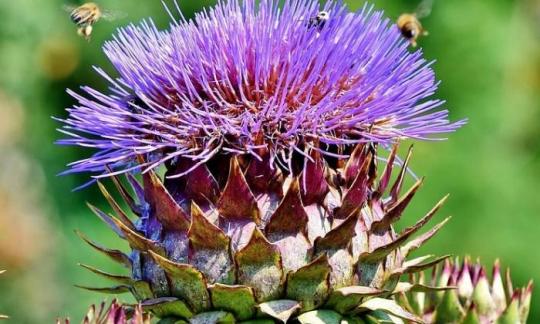

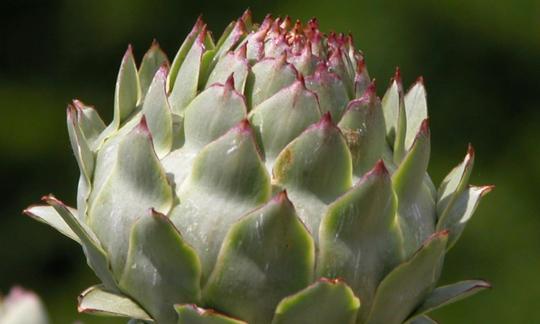

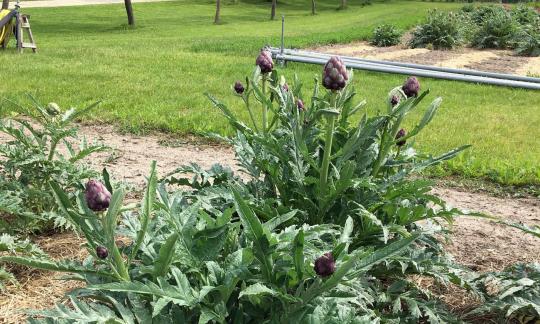

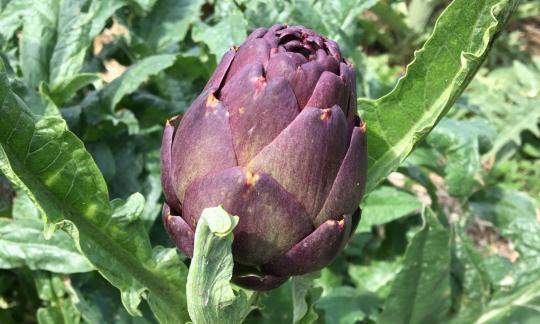

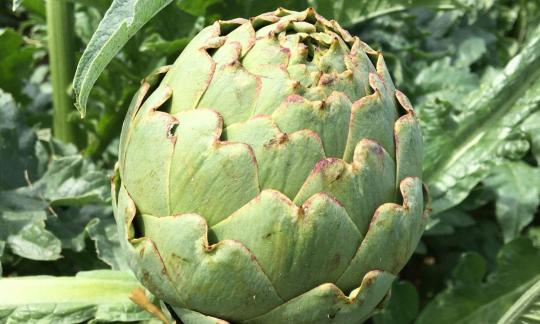

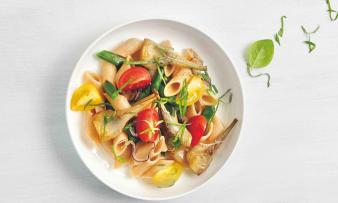





Comments